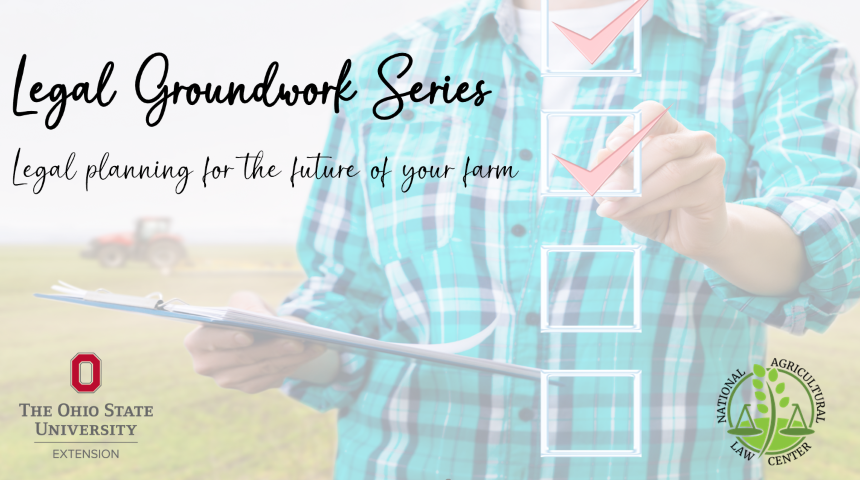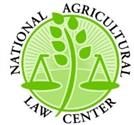Written by David L. Marrison, Professor & Field Specialist in Farm Management, OSU Extension
“I guess it comes down to a simple choice, really. Get busy living or get busy dying.” This famous line was quoted by Andy Dufresne, played by Tim Robbins, in the iconic movie titled “The Shawshank Redemption” released in 1994.
As we each traverse through our lives, we all are presented with moments that make us pause and reflect on how precious the time is we have been given here on earth. Every time I watch The Shawshank Redemption, I pause and think of the deeper message in this line: that life can be spent going through the motions and waiting around for something to happen or you can make something happen.
As we look at developing a plan for transitioning the farm to the next generation, are we waiting around for something to happen? Or will we work to make something happen? As farmers, we have to contend with and solve the day-to-day problems which arise on the farm. And there is never a shortage of problems that arise. Because of this, the time for deeper planning functions such as farm transition planning is often pushed down the to-do list. So, what will be the trigger to make something happen with regards to your succession plan?
What will be your trigger?
One of the hypothetical questions we pose in farm succession workshops is, “What knowledge would you need to pass on if you knew you had only two months to live?” This exact scenario happened to our family in 2010 when my father was diagnosed with pancreatic cancer just as we entered into Spring planting season on our dairy farm in northeast Ohio.
My father valiantly battled this disease but passed away seven weeks later. Our family learned a lot and had to scramble to manage the farm in the midst of his illness. I am grateful for the short time we had with my dad to make preparations. But it was not long enough to learn everything we needed to know to run the farm without him.
I challenge you to think how your farm and family would react to the loss of the principal operator. What knowledge and skills need to be transferred to the next generation so they can be successful without you? What can you do today to make something happen?
Who Will Manage the Farm in the Future?
As you develop your succession or transition plan, there are a myriad of decisions to be made. These decisions include identifying the next leader/manager of the farm, how to be fair to off-farm heirs without jeopardizing the future of the on-farm heirs, how to distribute assets through the estate plan, how and when the senior generation will retire, and how the business will deal with unexpected issues such as divorce, disability or paying for nursing home expenses. I would contend that the most crucial planning functions are to identify the next manager of the farm and then strategically plan how to develop them to lead the farm in the future.
The first step is to identify who the next leader or leaders of the farm will be. The next generation could be an immediate family member (son, daughter, grandchild) or extended family member (brother, sister, niece, nephew). With that said, the next leader does not have to be from your family as some farms have transitioned successfully to a non-blood friend or neighbor. The key is to choose a successor who will be the best caretaker of the farm and the land they will be entrusted with.
As you review potential managers and heirs to your farm, it is important to talk with them about their vision for the future and how it aligns with the current farming operation. What are their goals and aspirations for the farm? What concerns do they have about the future of the farm?
Complete a skills assessment with each potential heir/manager to examine their current strengths and which areas they will need to receive training in order for them to be a better leader for the farm in the future. Talk with them to learn more about what they would be most concerned or scared about if they had to take over the farm today. Are there additional responsibilities they would like to assume and what is their expectation for an appropriate time for management control to be transferred?
The new manager should have experience with how other farms are operated. Having the future manager work on another farm prior to returning to the home farm is a valuable experience. Mentor relationships should also be developed for the new manager to have a trusted team to help them grow.
Putting the Transition into Motion
The transition can be accomplished gradually by turning over more responsibility and authority to the successor. In fact, this process may (and should) take 5-10 years. It is important to develop a timeline for transferring ownership, management responsibilities, and knowledge from one generation to the next.
As the senior generation transitions their role and responsibilities to the next generation, thought should be given to the overall labor hours which will be available. In some cases, the responsibilities of two members of the senior generation will be transitioned to a single successor. Think of husband/wife combination transitioning to one of their children. This could cause a labor shortage. Could some tasks be outsourced to independent contractors (like accountants)? Can some production practices be accomplished through custom hire arrangements (silage harvest or cattle breeding)?
The biggest task in the transition plan is making sure the next generation has a firm foundation of knowledge to manage the operation in the future. This will look different for each farm and for the type of manager that is needed.
Owner-Operator. If the next manager is going to be an owner-operator, then training will need to include how to manage all aspects of the farm. These include production skills to raise livestock and/or crop enterprises and marketing skills to effectively market each commodity produced. The owner-operator will also need financial skills to manage the operation’s finances and taxes and human resource skills to manage employees. Additionally, they will need to know how to maintain facilities, tools, and equipment as well as how to manage risk through crop, livestock, and farm insurance.
Owner-Landlord. To the contrary, if the next manager will be more of an owner-landlord, they will need to be trained less on the day-to-day production activities and more on how to manage the farm asset. Some skills which are necessary for landlords include tenant and farm rental management, farm finance and tax management, farm insurance decision making, and facilities and other farm assets maintenance.
Strategies recommended for farm businesses to utilize in the transition process are:
- Every person who is part of the business (family member and employees) should have a written job description which includes job duties, responsibilities, and expectations.
- Create an organization chart of all employees and how each employee relates to one another.
- Develop a timeline for the successor to work through each job description on the farm. It is good to start the new family member as an employee and not the top manager.
- Provide meaningful opportunities for decision-making as well as accepting responsibility for the future manager.
- Develop a plan on how the future manager can increase their equity in the farm business through gifting, purchasing or inheritance.
- Develop a timeline for retirement and managerial transfer from senior generation to the succeeding generation.
- Utilize family business meetings to discuss the transfer and changing roles within the business.
Some experts advise that the current manager take a number of planned absences before retiring to provide an opportunity for the successor to see what it is like to manage the business alone. This will also allow the current manager to see that the farm does not fall apart without them. So how do you know if the next generation is ready? There are two other approaches which you can use to help prepare the next generation to lead without you:
Opossum Approach. Just as an opossum plays dead, so too should the principal operator. Take an unannounced week away from the farm during one of the busiest times of the year for your farm and allow the junior generation to take over with no communication from the senior generation. I know this sounds crazy but how else will you know what knowledge and skills need to be transferred? It is a lot easier to come back after a short vacation and be able to answer the questions your son or daughter has. You won’t have this opportunity when you pass away.
365-Day Challenge. Outside of using the opossum approach, it should be the goal of the senior generation to transfer at least one knowledge point or skill to the next generation each day. So, by the end of the year, your heirs will have 365 new tools in their management toolbox. If you do this over the next five to ten years, you can teach your heirs an incredible amount.
Take Advantage of OSU Extension Workshops
Attend one of our “Planning for the Future of Your Farm” workshops this Winter to learn about the communication and legal strategies that provide solutions for dealing with farm transition needs and decision making. A webinar version and several in-person options for the workshop are being offered.
Webinar version. You and your family members can attend the workshop individually and online from the comfort of your homes. The four-part webinar series will be February 5, 12, 19, and 26, 2024, from 6:30 to 8:30 p.m. via Zoom. Pre-registration is required so that a packet of program materials can be mailed in advance to participating families. Electronic copies of the course materials will also be available to all participants. The registration fee is $75 per farm family. Register by February 2, 2024 to receive course materials in time. Register on this page.
In-person workshops. Our local Extension Educators are hosting in-person workshops at five regional locations across Ohio. Registration costs vary by location due to local sponsorships.
More information about our Planning for the Future of Your Farm workshops is available at:go.osu.edu/farmsuccession.
Final Thoughts
So, are you ready “to make something happen” to transition your farm to the next generation? Farm managers are encouraged to think about how the next generation can be prepared to lead the farm in the future. And as Andy Dufresne stated in The Shawshank Redemption, “remember, hope is a good thing, maybe the best of things, and no good thing ever dies.” Good luck as you plan for the future of your farm!





